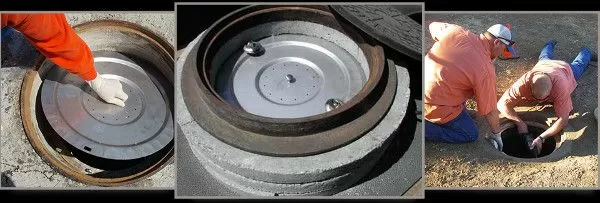Download our free Monitoring Fundamentals Tutorial.
An introduction to Monitoring Fundamentals strictly from the perspective of telecom network alarm management.
1-800-693-0351
Have a specific question? Ask our team of expert engineers and get a specific answer!
Sign up for the next DPS Factory Training!

Whether you're new to our equipment or you've used it for years, DPS factory training is the best way to get more from your monitoring.
Reserve Your Seat TodayYou can't be everywhere at once. Your outside plant (OSP) infrastructure facilities must sit unmanned for long periods.
So how do you protect your OSP buildings/enclosures from theft and vandalism? Remember these two major types of protection:
If unauthorized people can't get into your sites, they can't harm your equipment. Let's review a few ways to physically restrict access to your buildings and enclosures.
If nobody can see your site, you don't even need to lock it. Use what's available at the site. In an urban area, can you locate your facility behind a hedge or fence, for example. Consider opportunities to use clever paint color and other simple solutions to hide in plain sight.

Would-be thieves are unnerved by the thought of being seen. That's why security lights are so effective. During daylight, criminals depend on visual obstructions for concealment.
You can greatly reduce your threat of intrusion by making the entry door(s) very visible. Breaking into a facility is much less appealing if your efforts must be made in full view of the public. For buildings you can't totally conceal, use visibility to your advantage by using the general public as a surveillance deterrent.
You can't always deter thieves and vandals. Sometimes you just have to physically keep them out.
Common tactics include:
As helpful as physical security is, it can't stop everything. Some people are going to get through.
That's where good electronic monitoring comes in to warn you of the breach.
The exact device you choose will depend on the exact facility or enclosure you're trying to monitor. There are, however, two common security elements that you absolutely must track:
While you're at it, you might as well get the most value out of your monitoring device. Look for the ability to also monitor:
A remote telemetry unit (RTU) is the right kind of device to monitor your OSP facility. Here are a few common options:
The NetGuardian LT is a compact remote suitable for use in cabinets and other small enclosures. It has a wide temperature tolerance, so it will survive without HVAC in just about all climates. It can be wall-mounted (ex. inside of the cabinet door), so you don't need open rack space to install it.
The TempDefender is a compact remote with customizable input capacity. It's fairly small, but still has enough I/O to completely monitor the security of your OSP facility.
Got a larger OSP building/hut? The NetGuardian 832A is a larger remote with 32 discrete and 8 analog inputs. It uses a proven, evolving design that's been trusted by telcos since the 1990s.